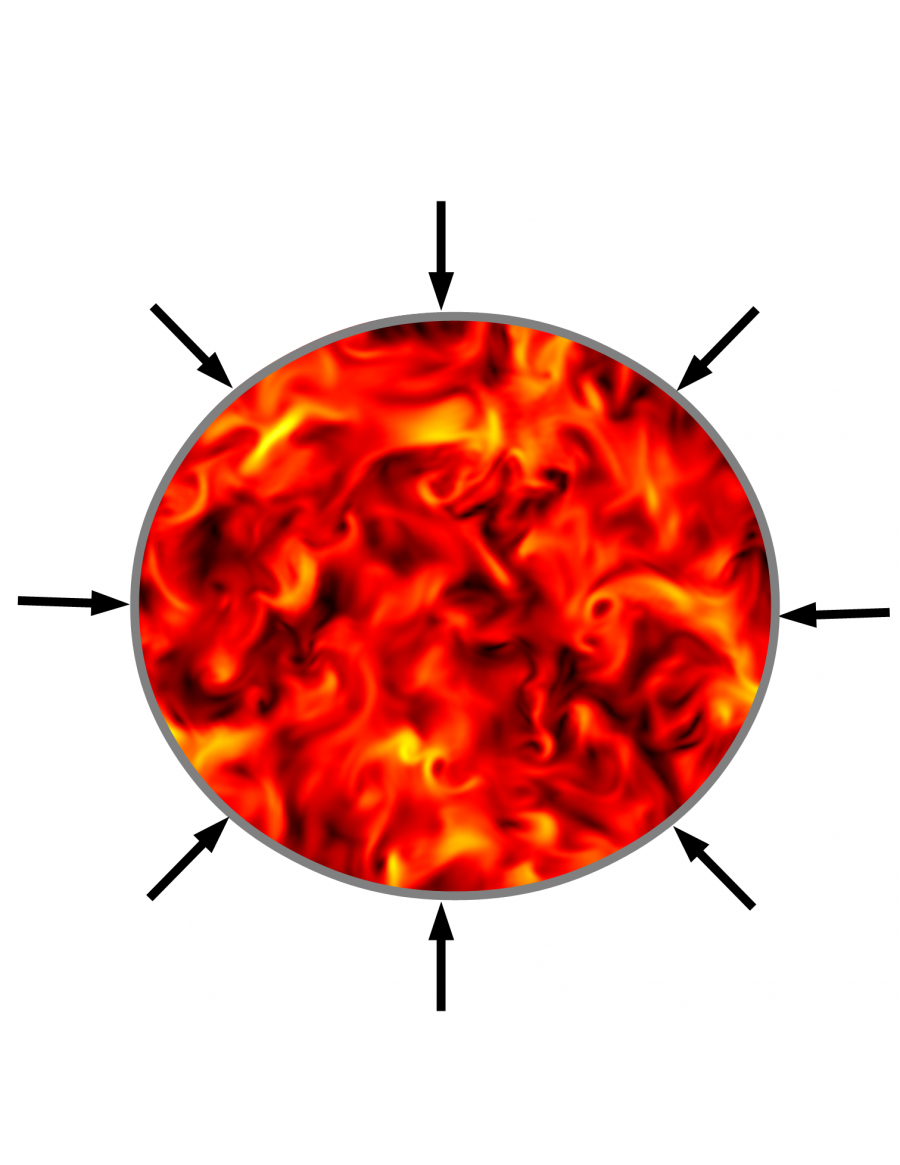Turbulence Could Help Spur Fusion, Alumnus’s Model Shows

The turbulence scientists have worked to quash in fusion experiments may actually help fuel them, research from a Department of Energy Computational Science Graduate Fellowship (DOE CSGF) alumnus has shown.
In inertial confinement fusion (ICF) experiments, powerful lasers or magnetic fields squeeze tiny pellets of hydrogen isotopes to such great pressures that the material becomes a hot plasma. The hydrogen atoms’ nuclei fuse, releasing tremendous energy. Scientists want to harness that energy to produce abundant carbon-free electricity.
Scientists have long believed turbulence in the compressed plasma inhibits fusion, but in a paper published in March in the journal Physical Review Letters, DOE CSGF alumnus Seth Davidovits has cast doubt on that conclusion. His studies have shown turbulence may store energy that would otherwise radiate away as heat.
Davidovits, working with doctoral advisor Nathaniel Fisch at Princeton University and the Princeton Plasma Physics Laboratory, modeled ICF compression, a PPPL release says. The simulation showed turbulence and the energy stored in it increase with pressure. As it got hotter, the plasma became more viscous, or resistant to flow. Increased viscosity slowed turbulence, and its energy was suddenly transformed into heat. That could raise the plasma’s temperature and increase the potential for fusion reactions, the researchers say.

In the PPPL release, Davidovits says the findings suggest “a fundamentally different design for compression-based fusion experiments.” He notes, however, that the model has limits. For instance, it doesn’t include interactions between the hydrogen fuel and the capsule containing it. Energetic turbulence could mix capsule material into the plasma, contaminating the fusion fuel and slowing the reaction.
Still, Davidovits and Fisch say, the rapid transfer of turbulent energy into heat in ICF experiments is a tantalizing idea that could advance such research.
Davidovits earned his bachelor’s degree in applied physics from Columbia University and was in the DOE CSGF from 2010 to 2014.
Image caption: Compression of a turbulent plasma. Image by Seth Davidovits via the Princeton Plasma Physics Laboratory.


